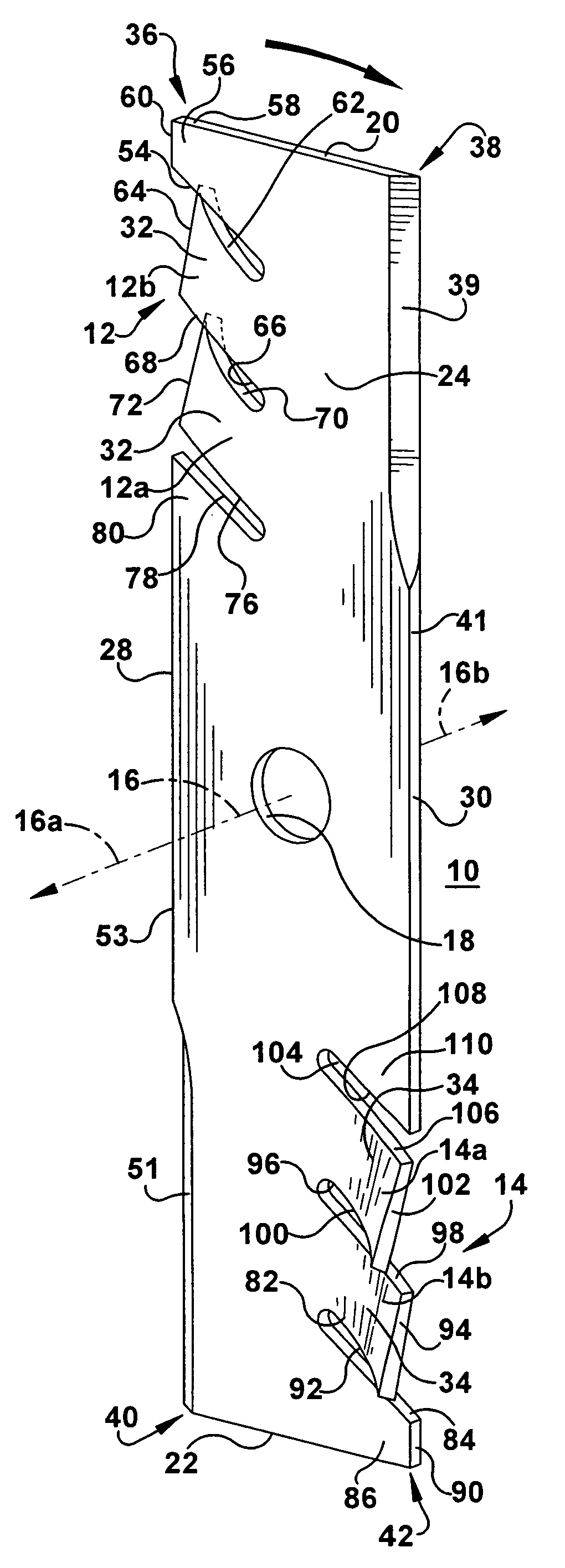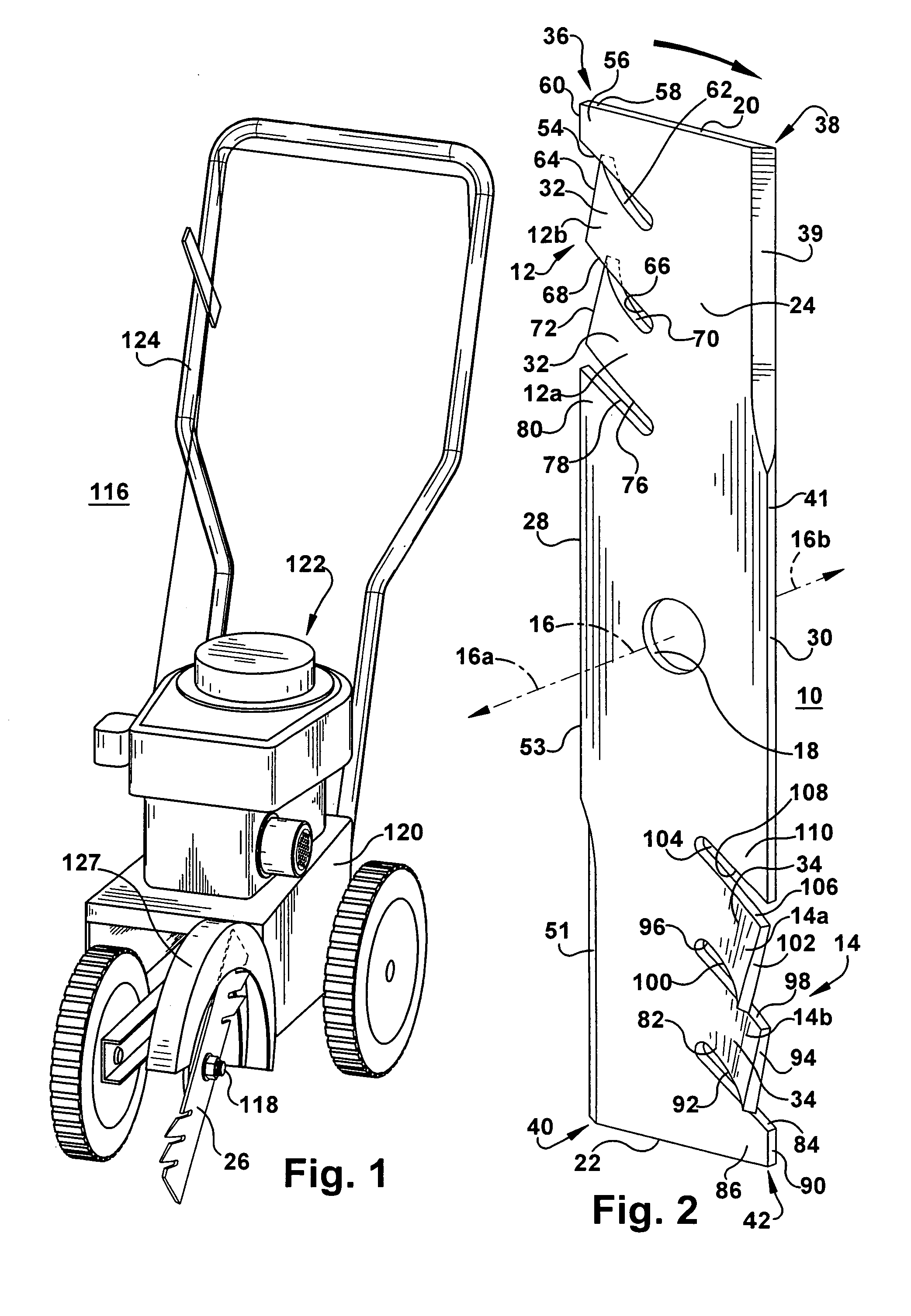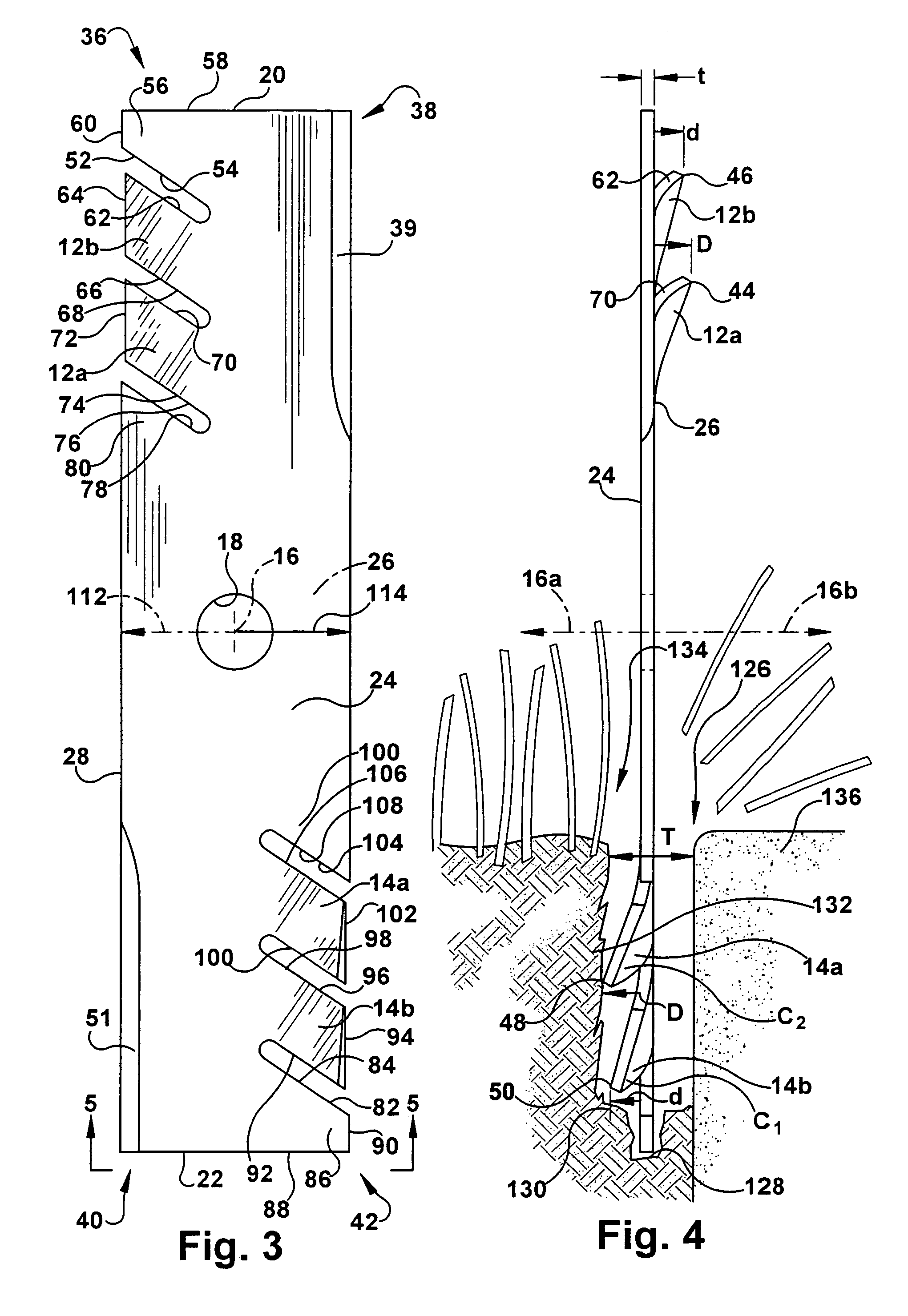Edging and trenching blade
a technology of trenching blades and blades, which is applied in the field of edging blades, can solve the problems of thin cutting of blades, and achieve the effects of avoiding clogging of the cover and jamming of the blade, efficient edging or trenching operation, and convenient use in the machin
- Summary
- Abstract
- Description
- Claims
- Application Information
AI Technical Summary
Benefits of technology
Problems solved by technology
Method used
Image
Examples
Embodiment Construction
[0029]Referring to the drawings, the present invention features a generally rectangular shaped blade 10 including first and second sets of teeth 12, 14 near opposing ends of the blade. The blade has a rotational axis 16 and is adapted to penetrate a surface to be cut. The axis extends in a first axis direction 16a (e.g., outwardly to the left from the left side of the blade) and in a second axis direction 16b (e.g., outwardly to the right from the right side of the blade). The first and second axis directions 16a, 16b are opposite, i.e., disposed 180° apart from each other. Referring to FIGS. 2 and 4, the first teeth 12 extend to the right and are referred to as right teeth and the second teeth 14 extend to the left and are referred to as left teeth. A central opening 18 is formed in the blade having the axis of rotation at its center. The opening can be circular, square or other suitable shape. The blade may be formed of any suitably hard and impact resistant material such as metal...
PUM
 Login to View More
Login to View More Abstract
Description
Claims
Application Information
 Login to View More
Login to View More - R&D
- Intellectual Property
- Life Sciences
- Materials
- Tech Scout
- Unparalleled Data Quality
- Higher Quality Content
- 60% Fewer Hallucinations
Browse by: Latest US Patents, China's latest patents, Technical Efficacy Thesaurus, Application Domain, Technology Topic, Popular Technical Reports.
© 2025 PatSnap. All rights reserved.Legal|Privacy policy|Modern Slavery Act Transparency Statement|Sitemap|About US| Contact US: help@patsnap.com



